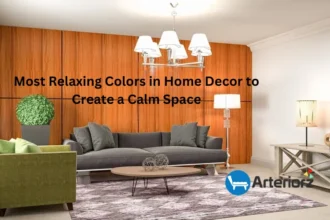Table of contents
- Define Zones with Furniture Placement:
- Arrange Furniture Around Focal Points:
- Create Conversation Areas:
- Use Area Rugs to Define Spaces:
- Consider Traffic Flow:
- Utilize Multifunctional Furniture:
- Pay Attention to Scale and Proportion:
- Balance Visual Weight:
- Incorporate Versatile Room Dividers:
- Experiment and Adapt:
- Consider Sightlines and Views:
- Harmonize with Color and Style:
- Use Visual Dividers:
- Focus on Vertical Space:
- Seek Professional Assistance:
- Conclusion
- FAQ’s
In modern home design, open-concept living spaces have gained immense popularity for their spaciousness, flexibility, and enhanced social interactions. However, arranging furniture in such spaces can be challenging due to the absence of defined room boundaries. To help you make the most of your open-concept living space, we’ve compiled a list of valuable tips and techniques for arranging furniture effectively. Whether you have a loft, studio apartment, or an open-plan home, these strategies will help you create distinct functional zones while maintaining a cohesive and visually appealing layout.
Define Zones with Furniture Placement:
Start by defining different functional zones within your open-concept space. Consider the primary activities you want to accommodate, such as lounging, dining, and entertainment. Place furniture strategically to delineate each area, using rugs, lighting, and visual cues to create boundaries without obstructing the flow of the space.
Arrange Furniture Around Focal Points:
Identify key focal points, such as a fireplace, large windows with a view, or a media wall. Arrange furniture to highlight these focal points and create a sense of balance and visual interest. Position sofas, chairs, and tables to face the focal point, encouraging conversation and maximizing the enjoyment of these features.
Create Conversation Areas:
In an open-concept living space, it’s crucial to create intimate conversation areas. Cluster furniture together to form cozy groupings where people can comfortably interact. Arrange sofas and chairs in a way that promotes easy conversation, with seating facing each other or in an L-shape configuration. Coffee tables or ottomans can be placed at the center as functional and visually appealing additions.
Use Area Rugs to Define Spaces:
Strategically placed area rugs can help define and anchor different zones within an open-concept living space. Use rugs to delineate the seating area, dining area, or workspace. Ensure that the rugs are proportionate to the furniture arrangement, allowing them to visually tie the elements together while adding warmth and texture to the space.
Consider Traffic Flow:
Efficient traffic flow is essential in open-concept spaces to avoid congestion and allow easy movement. Leave adequate space between furniture groupings to create clear pathways. Consider the natural flow of movement in the room and arrange furniture accordingly, ensuring that there are no obstacles or obstructions that hinder the circulation.
Utilize Multifunctional Furniture:
Maximize the functionality of your open-concept living space by incorporating multifunctional furniture. Opt for storage ottomans, console tables with shelves, or modular sofas that can be rearranged as needed. This not only saves space but also provides additional storage and flexibility in adapting to different activities and layouts.

Pay Attention to Scale and Proportion:
Maintaining proper scale and proportion is crucial when arranging furniture in an open-concept space. Ensure that furniture pieces complement each other in size and proportion. A mix of large and small furniture items can help create a visually balanced arrangement. Avoid overcrowding the space or using furniture that overwhelms the room’s dimensions.
Balance Visual Weight:
Achieve visual harmony by distributing the visual weight of furniture throughout the space. Balancing the placement of larger and bulkier furniture pieces with lighter and visually airy elements creates a sense of equilibrium. For example, if you have a large sectional sofa on one side, balance it with a visually light armchair and a floor lamp on the other.
Incorporate Versatile Room Dividers:
If you desire a bit more separation without sacrificing the open feel, consider incorporating versatile room dividers. These can be in the form of bookshelves, folding screens, or decorative partitions. They add architectural interest while providing a subtle visual division between different functional areas.
Experiment and Adapt:
Arranging furniture in an open-concept living space often requires experimentation and adjustment. Don’t be afraid to try different layouts and configurations to find what works best for your needs and aesthetic preferences. Move furniture around, swap pieces between areas, and experiment with different focal points and arrangements. Stay open to adapting and refining the layout as you live and interact in the space.
Consider Sightlines and Views:
Take advantage of the open nature of your living space by considering sightlines and views. Position furniture in a way that allows you to enjoy the surrounding scenery or architectural features. Align seating areas with windows or create a cozy reading nook near a picturesque view. By incorporating the external environment into your furniture arrangement, you can enhance the overall ambiance and connection to the outdoors.
Harmonize with Color and Style:
Maintain a cohesive and harmonious look throughout the open-concept living space by considering color and style. Choose furniture pieces that complement each other in terms of color palette and design style. This will create a sense of visual continuity and make the space feel cohesive and well-designed.
Use Visual Dividers:
If you desire a more defined separation between different functional areas, use visual dividers. These can be achieved through various elements such as pendant lights, artwork, or tall plants. By strategically placing these visual dividers, you can create a sense of privacy and individuality for each zone while maintaining the open feel of the overall space.
Focus on Vertical Space:
In open-concept living spaces, utilize vertical space to add interest and functionality. Install tall bookshelves, floating shelves, or wall-mounted cabinets to provide additional storage and display areas. This not only maximizes storage but also draws the eye upward, adding visual depth and character to the space.
Seek Professional Assistance:
If you’re struggling to arrange furniture in your open-concept living space, consider seeking professional assistance. Interior designers or space planners can provide expert advice and suggest creative solutions tailored to your specific needs and space requirements.
Conclusion
In conclusion, arranging furniture in an open-concept living space requires careful consideration of functionality, aesthetics, and flow. By defining zones, arranging furniture around focal points, creating conversation areas, and using visual cues, you can achieve a well-balanced and inviting layout. Experimentation, adaptation, and attention to scale, proportion, and traffic flow are key to creating a harmonious and functional space that suits your lifestyle and reflects your personal style. With these tips in mind, you can confidently arrange furniture in your open-concept living space and create a cohesive and visually appealing environment for all to enjoy.
Read Divan Bed Headboard Installation Guide
FAQ’s
Define zones with furniture placement, using rugs, lighting, and visual cues to create boundaries without obstructing the flow of the space.
Achieve visual harmony by distributing the visual weight of furniture throughout the space, balancing larger pieces with lighter and visually airy elements.
Install tall bookshelves, floating shelves, or wall-mounted cabinets to add interest, functionality, and storage while drawing the eye upward.

Author Disclaimer
I, Charles, am a seasoned expert in divan beds and the author of this blog. The information provided is based on my extensive knowledge and experience in this field. However, please note that the content is for informational purposes only and should not be considered as professional advice. Readers are advised to conduct their own research and consult with experts before making any decisions regarding divan beds. I cannot be held responsible for any errors, omissions, or consequences resulting from the use of the information provided in this blog.





